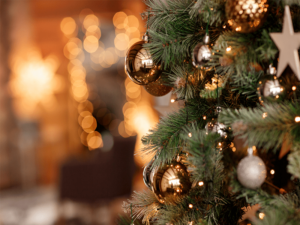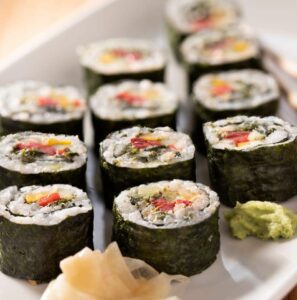[et_pb_section fb_built=”1″ admin_label=”Products” _builder_version=”4.16″ background_color=”#f7f9fc” use_background_color_gradient=”on” background_color_gradient_stops=”#f7f9fc 0%|#ffffff 100%” background_color_gradient_start=”#f7f9fc” background_color_gradient_end=”#ffffff” custom_padding=”0px|||||” global_colors_info=”{}”][et_pb_row _builder_version=”4.16″ _module_preset=”default” global_colors_info=”{}” custom_margin=”|auto||45px||”][et_pb_column type=”4_4″ _builder_version=”4.16″ _module_preset=”default” global_colors_info=”{}”][et_pb_text _builder_version=”4.16″ _module_preset=”default” global_colors_info=”{}”]
Principles of Manual Handling
[/et_pb_text][/et_pb_column][/et_pb_row][et_pb_row column_structure=”1_2,1_2″ _builder_version=”4.16″ _module_preset=”default” global_colors_info=”{}” custom_padding=”||0px|||”][et_pb_column type=”1_2″ _builder_version=”4.16″ _module_preset=”default” global_colors_info=”{}”][et_pb_text _builder_version=”4.16″ _module_preset=”default” global_colors_info=”{}” custom_margin=”|-53px||-47px||”]
1. Principles of Safe Manual Handling – Assess the task
The safest best technique for performing the task is determined by considering:
- the environment
- the ability of the handler to perform the task e.g., size, age, state of health
- the nature of the load – i.e., animate or inanimate
2. Plan
Ensure that the area is free from obstacles like debris on the floor which may interfere with the smooth implementation of the procedure. Wear comfortable clothing, which allows free movement. Shoes should have flat heels, covered toes and provide good support to the feet. Articles of jewellery, which could become entangled, should be removed. Brakes must be applied to moveable equipment. Ensure adequate help is available.
[/et_pb_text][/et_pb_column][et_pb_column type=”1_2″ _builder_version=”4.16″ _module_preset=”default” global_colors_info=”{}”][et_pb_image src=”https://compliplus.com/wp-content/uploads/2021/11/8.8-scaled.jpg” alt=”Manual Handling Principles” title_text=”Manual Handling Injury” _builder_version=”4.16″ _module_preset=”default” global_colors_info=”{}”][/et_pb_image][/et_pb_column][/et_pb_row][et_pb_row _builder_version=”4.16″ _module_preset=”default” global_colors_info=”{}” custom_margin=”|-30px||37px||” custom_padding=”5px|0px|0px|||”][et_pb_column type=”4_4″ _builder_version=”4.16″ _module_preset=”default” global_colors_info=”{}”][et_pb_accordion _builder_version=”4.16″ _module_preset=”default” hover_enabled=”0″ global_colors_info=”{}” width=”100%” sticky_enabled=”0″ custom_margin=”|-93px||||”][et_pb_accordion_item open=”on” _builder_version=”4.16″ _module_preset=”default” global_colors_info=”{}”]
3. Principles of Safe Manual Handling -Position the feet
Feet should be comfortably apart to provide a wide base of support and to allow the handler to get as close to the load as possible. Feet should be positioned in the direction of movement of the procedure so that weight can be transferred smoothly from one leg to the other. The centre of gravity should fall within the base of support to give a more stable posture.
4. Get a secure grip
Make sure that the grip is comfortable for both the child and the handler and that this is decided before commencing a procedure.
5. Keep the load close to the body
Make sure the load is brought as close as possible to the handler to minimise stress on the lumbar spine.
6. Maintain good posture throughout the procedure
The vertebral column should be in correct alignment in the normal spinal curvature. The handler should keep his/her head up and neck straight, brace abdominal muscles to support his/her spine and avoid twisting.
7. Use the leg muscles
Hips and knees must be bent to lower the centre of gravity and align the body correctly. The strong leg muscles are used to reduce the stress on the spine.
8. Principles of Safe Manual Handling – Use body momentum
Timing is essential so that the transfers can be performed smoothly and steadily. Both client and handler should be fully prepared and the timing agreed e.g., one, two, three – lift. In team lifting, one person becomes the leader and directs the procedure.
[/et_pb_accordion_item][/et_pb_accordion][/et_pb_column][/et_pb_row][et_pb_row _builder_version=”4.16″ _module_preset=”default” ab_subject=”on” ab_subject_id=”1″ global_colors_info=”{}”][et_pb_column type=”4_4″ _builder_version=”4.16″ _module_preset=”default” global_colors_info=”{}”][et_pb_text _builder_version=”4.19.3″ _module_preset=”default” width=”100%” custom_padding=”|0px|0px|||” hover_enabled=”0″ ab_goal=”on” global_colors_info=”{}” custom_margin=”|||-61px||” sticky_enabled=”0″]
Good posture
A good posture is one that puts the least possible amount of strain on your joints and muscles and takes a minimal amount of energy to maintain. A good posture also limits the wear and tear on joints and helps prevent injury, joint and muscle fatigue.
To achieve the Principles of Safe Manual Handling, follow these guidelines.
- When standing, put equal weight on each leg and keep your back straight.
- When sitting, your hips and knees should be at right angles (90°), the natural curve of your back is maintained and you should put equal weight on each buttock.
- At work, remember to maintain a good posture when involved in meal assistance, client care and programs, pushing wheelchairs and doing up seat belts, etc. Remember that the constant bending involved in carrying out daily routines can be very stressful on your back.
- Even when sleeping, make sure you maintain a good posture as you can strain back and neck muscles while lying in bed. A supportive mattress is essential.
For more infomation on how to book an online course please contact us or visit our buy now here
You can also view more information on HSA
[/et_pb_text][/et_pb_column][/et_pb_row][et_pb_row _builder_version=”4.16″ _module_preset=”default” ab_subject=”on” ab_subject_id=”2″ global_colors_info=”{}”][et_pb_column type=”4_4″ _builder_version=”4.16″ _module_preset=”default” global_colors_info=”{}”][et_pb_text _builder_version=”4.16″ _module_preset=”default” ab_goal=”on” global_colors_info=”{}”]
Organisational Factors
People’s behaviour in the workplace is affected by the collective characteristics of the business, organisation and teams in which they work.
Employees respond to the visible and invisible messages they receive from others within their organisation, though not always in the way intended. Safety culture influences human behaviour which in turn influences the organisation’s culture. To manage health and safety effectively it is important to consider how all the organisational factors listed below influence and affect human behaviour.
- managing organisational change
- safety culture
- behavioural safety
- leadership and supervision
- communications on safety
- resource, staffing levels and organisation workload
- human reliability – human error and systems failures
- human factors in incident investigation
- human factors integration
- emergency response.
Task Factors
The way jobs are designed to interface with equipment and the workplace environment has a direct effect on the health and safety of workers. The timing of shifts, the length and frequency of breaks, the task workload, the physical and mental demands due to the design of the task, equipment and environment are all important factors to consider which influence human performance and can affect both the individual and the integrity of the whole work system. Consideration should be given to the following factors in designing jobs:
- manual handling, repetitive actions and ergonomics
- work-related stress (e.g. high workload)
- fatigue from working patterns – shift work and overtime
- alarm handling
- interfaces with plant and equipment
- design and effectiveness of procedures
- routine and non-routine work.
Individual Characteristics
People vary in many ways, physically, mentally and in their personality, mood, knowledge and experience. The individual’s characteristics including their competence, skills, personality, attitude and risk perception, influence behaviour in complex ways. Some characteristics such as personality are more constant; others such as skills and attitudes may be changed or enhanced. Finally, people have different knowledge and experience on which to draw.
The design of the job, the equipment, information and work environment should all take account of the variety of individual capabilities and limitations. People should have the appropriate knowledge, skills and abilities to be able to carry out their work effectively and safely. They also need to have the appropriate attitudes and awareness of the risks in order to work in a safe manner. It is, therefore, necessary to ensure everyone has the appropriate training and personal development if they are to work efficiently and safely.
It is also important to ensure that the workplace is designed ergonomically to support rather than hinder people’s task performance. When people are recruited, or change their jobs, it is sensible to check if any adaptations to the workplace would reduce the risk of human error, injury or ill-health as well as increasing their efficiency or productivity.
Consideration should be given to the following factors, where legislation allows:
- training and competence
- motivation and attitudes
- adaptation of the job to the individual (see job, environmental and equipment factors above)
- private personal, medical or family matters that can adversely influence work performance
- stress and psychosocial risks in the workplace
Addressing Human Factors: The Business Benefits
If you think managing safety is expensive, then you need to understand the actual costs of an accident which can very quickly run into tens of thousands. Managing human failures is essential to prevent major accidents, occupational accidents and ill health, all of which can cost businesses money, reputation and potentially their continued existence.
Successful businesses achieve high productivity and quality while ensuring health and safety. Good technology combined with the best work systems can help to achieve these goals. The best work systems are based on having a skilled workforce, with well-designed jobs that are appropriate to individuals’ abilities.
Individuals have a wide range of abilities and limitations. A Human Factors (or Ergonomics) approach focuses on how to make the best use of these capabilities: by designing jobs and equipment which are fit for people. This not only improves their health and safety but often ensures a better managed, more effective organisation.
Paddy McHugh, CEO of Compliplus acknowledges contributions from the HSA (www.hsa.ie), HSE (www.hse.gov.uk) and EIGA in compiling this article.
[/et_pb_text][/et_pb_column][/et_pb_row][/et_pb_section]






